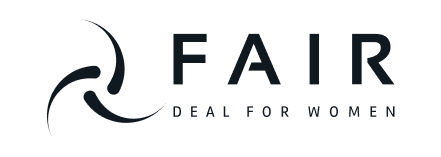In the South though, shorter kokoshniks were more often decorated with woolen embroideries. When comparing clothes of modern and traditional European women, the former are known for their color and elegance. Their clothing usually consists of a long skirt, a floral or striped cotton blouse and a neck scarf. For special occasions, they may wear a fur cap or a brimmed hat, or both. Dutch men wear a loose shirt with a brass button and suspenders. They also wear an additional coat during cold weather, and knee-length pants or stockings.
- Men wore thick and embroidered vests or coats, with an apron worn above the pants.
- You can if you want, but all sorts of people visit Europe and no one expects tourists to follow a dress code.
- Itari – a long trouser worn by peasants using a special sheep wool called tigaie.
- Paired with a traditional scarf headdress completing the peasant look.
Women in Italy have a 98% literacy rate, have a basic education and often go to university. Abkhazian women are more active as participants in the realm of business and in activities related to establishing organizations for women in their country.
Top Options Of Traditional European Women
The theory of actinic radiation was not exclusive to Woodruff, and his version was considered unscientific compared with current research of the day. Nonetheless, Dane Kennedy maintains that Woodruff’s work was a major factor in precipitating British production of tropical clothing in relation to actinic rays. What was remarkable was his ability to keep secret his role in developing Solaro clothing well before the appearance of Woodruff’s text and that he waited until 1907 to declare his involvement. “Imperial tropical medicine” refers to the increasing emphasis on research of vector-borne parasitic diseases in metropolitan Britain and programs in the tropical colonies that focused on their control.
Europeans dress up more than Americans, especially for meals and special occasions. With that being said, don’t show up at dinner wearing sweatpants, shorts, or a T-shirt, and especially not pajama bottoms. Watch your baby girl blossom into a rare and beautiful flower and give her this French-inspired European girl’s name to match her blooming disposition.
The Basics Of Traditional European Women Revealed

Women wore white shirt with a wide down lace collar, an A-cut full skirt, embroidered apron with a little pocket, and a pair of stockings and low-heeled clogs. Located on the northern portion of Portugal, women wore the basic ensemble of laced- sleeved blouse, long and brightly colored skirts, brown woolen apron , fringed shawl and a pair of slippers. Their clothing also includes a brimmed hat and a scarf for their duties encompasses bringing sea salt from the ships to the storage house. Men wore embroidered blue vest over a white long sleeves shirt with the same decoration in the collar and cuffs. Tapered pants displays colorful stitching along the sides tucked inside the high leather boots.
Norway – The bunad is a colorful traditional Norwegian folk costume that is worn in Norway by many people on important days like weddings or for folk dances. The female version of the bunad is more popular than the male version, but both are made of wool, tight-fitting, and outfitted with metal buckles and jewelry. If you want to give your baby a beautiful name, European female names and Latin names are a good way to go. Spanish, French and Latin are some of the most popular origins of the most popular European baby girl names out there. These names are chic, vintage and powerful, they are immensely loved by all. If you are looking for cool European names or the most beautiful European names, here is a list of some of our favorites, we hope you will love them too. If there’s a particular European country that you love dearly, or perhaps you are from Europe yourself, you might like to consider these beautiful girl names as the perfect name for your new baby girl.
Generally speaking, the only people who wear white running shoes are Americans in sneakers. Best to don comfortable walking shoes for cobblestones and city environments, as Europeans love to walk. European women wear heels a lot, but they are used to walking on cobblestoned streets, so we recommend leaving them at home or only bringing them for special occasions where you know you won’t walk too far. When you choose Saoirse, be prepared to have patience and correct the pronunciation of your baby girl’s name. However, it’s synonymous with freedom, liberation, and standing up for your rights.
Detail by detail Notes on Traditional European Women In Step by Step Order
Bold patterns are not used so commonly by Europeans as they are by Americans. When Europeans do go for patterns on their clothes, the patterns are usually more detailed. European fashions are most easily recognized by their clean, simple lines.
If you’re traveling, don’t cart around a big, tourist-style backpack. Carry a side bag, LeSportsac bag, messenger bag, leather satchel or something of the sort. A pair of wooden framed, gradient Ray Bans would do the trick with any outfit. You can check out European fashion sites to see what colors are in fashion now. Beautiful turtle doll 13 cm in traditional costume, by the German company Schildkrot, original clothing, for dollhouse or collection.
Who Else Really Wants To Find Out About Traditional European Women?
Her arrival will guarantee lively connections with your community and reconnecting with family and friends over their shared excitement of her arrival. A daughter named Catalina will be a pure source of joy and light on even your darkest days. Embrace this exotic choice for a European female name and listen as the compliments from friends and family pour in. Prepare to be blown away by the instant love your newborn daughter brings into your household. Brisa is a European female name that emulates the call of the wilderness from the adventurous continent.
A black dress made from wool worn by women in the 18th to 19th century. The ensemble includes a twill jacket and kilt made from knitted yarn paired with a black tail cap, which was previously an apparel for men. This was said to have been curated due to the clamor for better working clothes. Originally loose, without cuffs and collar, and later replaced with embroidered shirts with collar and cuffs. Breeches were pleated trousers called full gatya, worn with a dark vest made from fur or leather. Kuzsok was a famous embroidered sleeveless fur coat made from sheepskin used while working. Women wore brightly colored dresses such as red, white, blue, green or yellow made from either a silk or a velvet fabric.

